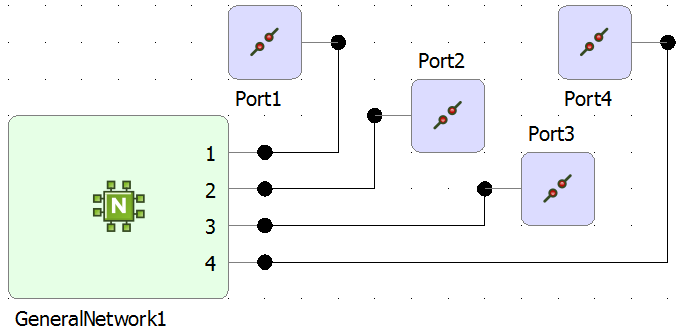General Non-Radiating Networks
Complex feed networks can be simplified by including them as a circuit representation using general network blocks.

Figure 1. A four-port general non-radiating network.
Complex feed networks can be simplified by including them as a circuit representation using general network blocks.
